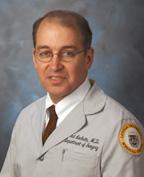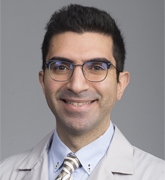Trends in utilization of whole-body computed tomography in blunt trauma after MVC: Analysis of the Trauma Quality Improvement Program database. Journal Article
Local Library Link: Find It @ Loyola
| Authors: | Bunn, C; Ringhouse, B; Patel, P; Baker, M; Gonzalez, R; Abdelsattar, ZM; Luchette, FA |
| Article Title: | Trends in utilization of whole-body computed tomography in blunt trauma after MVC: Analysis of the Trauma Quality Improvement Program database. |
| Abstract: | BACKGROUND: The use of whole-body computed tomography (WBCT) in awake, clinically stable injured patients is controversial. It is associated with unnecessary radiation exposure and increased cost. We evaluate use of computed tomography (CT) imaging during the initial evaluation of injured patients at American College of Surgeons Levels I and II trauma centers (TCs) after blunt trauma. METHODS: We identified adult blunt trauma patients after motor vehicle crash (MVC) from the American College of Surgeons Trauma Quality Improvement Program (TQIP) database between 2007 and 2016 at Level I or II TCs. We defined awake clinically stable patients as those with systolic blood pressure of 100 mm Hg or higher with a Glasgow Coma Scale score of 15. Computed tomography imaging had to have been performed within 2 hours of arrival. Whole-body computed tomography was defined as simultaneous CT of the head, chest and abdomen, and selective CT if only one to two aforementioned regions were imaged. Patients were stratified by Injury Severity Score (ISS). RESULTS: There were 217,870 records for analysis; 131,434 (60.3%) had selective CT, and 86,436 (39.7%) had WBCT. Overall, there was an increasing trend in WBCT utilization over the study period (p 0.001). In patients with ISS less than 10, WBCT was utilized more commonly at Level II versus Level I TCs in patients discharged from the emergency department (26.9% vs. 18.3%, p 0.001), which had no surgical procedure(s) (81.4% vs. 80.3%, p 0.001) and no injury of the head (53.7% vs. 52.4%, p = 0.008) or abdomen (83.8% vs. 82.1%, p = 0.001). The risk-adjusted odds of WBCT was two times higher at Level II TC vs. Level I (odds ratio, 1.88; 95% confidence interval 1.82-1.94; p 0.001). CONCLUSION: Whole-body computed tomography utilization is increasing relative to selective CT. This increasing utilization is highest at Level II TCs in patients with low ISSs, and in patients without associated head or abdominal injury. The findings have implications for quality improvement and cost reduction. LEVEL OF EVIDENCE: Care management, Level IV. |
| Journal Title: | The journal of trauma and acute care surgery |
| ISSN: | 2163-0763; 2163-0755 |
| Publisher: | Unknown |
| Date Published: | 2021 |
LUC Authors
-
 51
51Luchette -
 27
27Patel -
 21
21Gonzalez -
 66
66Baker -
 38
38Abdelsattar
Related LUC Article
